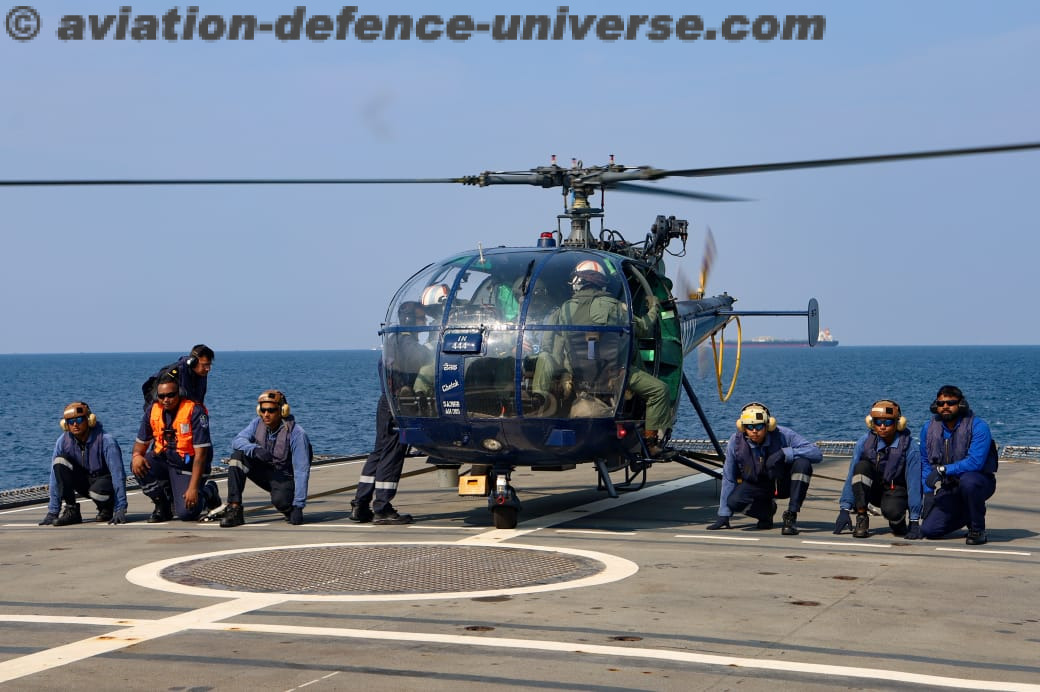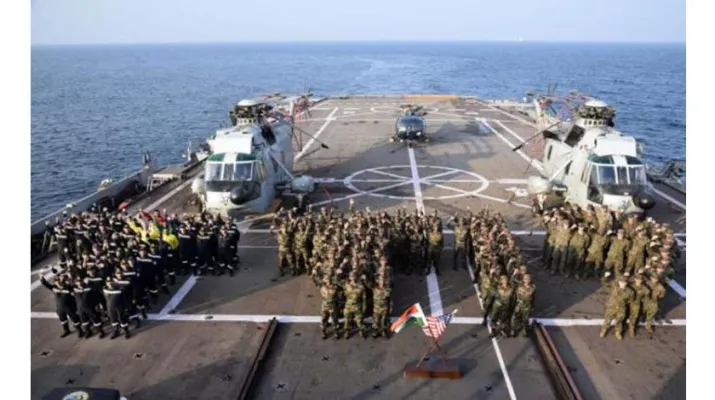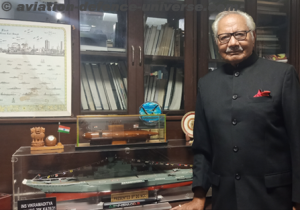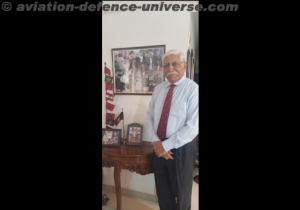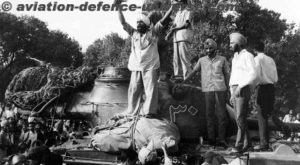Courtesy : Indian Army
The result of Sino-India Conflict of 1962 encouraged Pakistan to seek a military solution of the Kashmir problem: A modernised Army, to which U.S.A. had contributed substantially, added to her confidence. By 1965, she had been able to acquire an edge over India in armour, artillery and air-power. This sense of superiority prompted her to plan aggression on Kashmir in 1965. It was a three-phased programme. In the first phase the Indian capacity to react was tested in the Rann of Kutch. In the second phase trouble was fomented in Kashmir to weaken the Indian hold. In the third phase an attempt was made to bottle up the Indian Army in Kashmir by sealing the supply line in Chhamb-Jaurian sector of Jammu.
The First Phase
The Rann of Kutch is an 80 km wide and 515 km long stretch of land bordering on Sind in Pakistan and Gujarat in India. The area was better defended from the Pakistan side. On the Indian side police posts guarded the border. Despite Pakistani mischief in Kanjarkot in January 1965, India expected no major instrusion in this area.
On 7 April 1965, Pakistan the Indian border at Sardar post, Kanjarkot, Vigokot, Biar Bet, Chhad Bet, etc., in Brigade strength and over-ran the first two posts. India moved a Bde (50 Para) to check the Pakistani intrusion. Pakistan strengthened her Brigade with a tank regiment. On 23 April, Pakistan again struck on four border posts and captured Vigokot and Biar Bet. The hostilities ended on 1 July 1965, at the intervention of the British Prime Minister. Though no major gains accrued to either side, Pakistan felt elated by this adventure.
The Second Phase
After this supposed success in the Rann of Kutch, Pakistan put into action her plan to grab the valley of Kashmir by infiltration and sabotage. The conspiracy was code-named ‘Operation Gibraltar’. 30,000 Raiders (Mujahids) divided into ‘Task Forces’ infiltrated into Kashmir between 1 and 5 August with this intent. The Indian XV Corps took some quick measures and was able to contain the infiltrators within fifteen days. But to remove the threat completely it was necessary to seal the entry points of the infiltrators. Indian Army attacked Kargil (in Leh sector), Tangdhar (Tithwal sector) and Haji Pir (in Uri sector) with this intent. To further seal the entry points of the infiltrators a link with Punch was effected by 93 Brigade. In the process two strong features of Raja and Chand Tekri, held in strength by the enemy, were reduced on 5-6 September 1965. Mirpur area on river Kishanganga was taken care of by 104 Bde. The operation opened in this sector on 24 August and lasted till 21 September. The brigade fought many fierce battles to acquire complete domination in this area. In short, the timely action of the Indian Army (19 Division) turned ‘Gibraltar’ into a total disaster.
The Third Phase
Pakistan finally launched the operation ‘Grand Slam’ to retrieve the situation. The aim was to defeat Indian forces in Chhamb area to facilitate the capture of Akhnur bridge and Jammu. This in turn would have cut the Indian line of communication to Kashmir.
The Pak offensive in Division strength came at 0345 hrs on 1 September 1965. Comparative superiority in artillery, armour and infantry almost ensured its success. The Indian 10 Division was still in the making. The 191 Bde responsible for the defence of the area could not stop the Pak three-pronged advance and retreated to Akhnur on 4 September. With Pakistan resuming advance on Akhnur on the 5th, the situation became very critical. India took recourse to diversionary attacks on Pakistan in Lahore, Sialkot and Rajasthan sectors. This shattered the Pak dream to bottle up Indian forces in Kashmir.
Lahore Sector
In Lahore sector the three Divisions (15, 7, 4) of Indian XI Corps mounted attack on an area extending from Pathankot in the north to Suratgarh in the south. The area was divided into three sectors. The northern sector along the GT Road axis was assigned to 15 Division, the central sector along a the Khalra-Barki axis to 7 Division and the southern sector along the Khem si Karan-Kasur axis to 4 Mountain Division. Necessary armour and artillery Ir support was provided to each division. The corps aimed to capture all Pakistani territory east of Ichhogil Canal. The Indian attack commenced at 0400 hrs on 6 September 1965. In the beginning the operations of 15 Division in the northern sector went well. Its advance brigade captured Dograi in the first sweep and established a bridgehead across the Ichhogil It and reached Batapore on the outskirts of Lahore. But it could not capitalise Ir on these initial gains and fell back when the Pak troops retaliated with of good armour support. The second attempt of the division to capture the Si Pak territory, initiated on 10 September, brought only a limited success. The highlight of this thrust was the capture of Dograi by the 3 Jat at Tc midnight on 21 September. In this action Pak suffered 150 men dead and in 100 others made prisoners.
The operations went on well in the central sector. Here the 7 Infantry Division advanced on Khalra-Barki axis with great dash and completed fu its assignment by 11 September 1965. The most difficult action during the Di advance was fought by the Division at Barki, which was protected by pr strong bunkers. 4 Sikh broke all enemy resistance and captured Barki by pr 2130 hrs on 10 September. Both sides suffered heavy casualties in this Pa battle.
The 4 Division, however, found the going difficult in the southern sector. It shouldered a two-fold responsibPity—capture Pak territory east of Ichhogil Th and contain possible enemy attack on Kasur-Khem Karan axis. The Division Di gained some initial success but the Pak counter offensive blunted the Jas Indian advance. In fact, Pak had planned a powerful offensive in this sector att as an enveloping move to destroy XI Corps.
The Indian 4 Division, unable to check the powerful attack, fell back ME on Asal Uttar. It now comprised only three and a half battalions as the 7 Bde had been rendered ineffective in the first Pak attack. But the Div 181 was now occupying a well defended position with well sited artillery and Ra armour in support. The Pak effort to run through the Indian position was, Inc therefore,, foiled. On the 8th night Pakistanis tried to outflank the position in on the right with an armoured bde, but here again 4 Grenadiers stood like of a rock to beat the Patton attack. Havildar Abdul Hamid alone destroyed Pal two tanks and damaged one in this battle. Another outflanking move by doi a Pak armoured bde from the left side on Mahmoodpura-Dibbipura axis also failed as the well sited Indian armour regiments trapped them on three sides. Pakistan lost 97 tanks including 72 Pattons in the battle of Asal Uttar. Indians made some attempts to recapture the lost territory, but Pakistanis held on to the area till the last. The cease-fire denied the Indians another opportunity to beat back the Pakistanis. The right flank of XI Corps was protected by 29 Infantry Bde Group. It launched an attack on Dera Baba Nanak and captured it on 7 September_ Indian XI Corps generally succeeded in its mission to capture areas east of Ichhogil Canal except in the Khem Karan, sector.
Sialkot Sector
To ease pressure on Chhamb another front was opened by the Indian Army in Sialkot sector by launching 1 Corps on 8 September 1965. 26 Infantry Division carried diversionary move in the north towards Sialkot. 6 Mountain Division attacked Charwa-Maharajake area and captured it after some fighting. 14 Infantry Division established a bridge-head in Ikhnal area further to the east. This set the stage for the advance of 1 Armoured Division. It moved out on 8 September but bad weather hindered its progress. The commander then chose another axis to mount attack on Phillora on 11 September. While the Armoured Brigade was engaging the Pak armour, 43 Lorried Bde captured Phillora in a spirited action. Pak army lost nearly 61 tanks in this battle.
1 Armoured Division then proceeded to capture Chawinda on the 14th. The Pak armour had already concentratred in the area and, therefore, the Division could make little progress. However, it succeeded in capturing Jassoran and Batur Dograndi on the 16th. It was in one of the Pak counter attacks on Batur Dograndi that Lt Col Tarapore of Poona Horse was killed fighting. Another effort by 1 Corps to capture Chawinda on,the 18th night met with limited success. The corps, however, succeeded in capturing about 466 sq kilometres of Pak territory. It destroyed and captured about 180 Pak tanks.
Rajasthan Sector
India opened a third front in Rajasthan sector to tie down the enemy forces in Sind. 11 Infantry Division carried operations on Barmer-Hyderabad axis of this sector. Gadra was occupied in the first sweep on 8 September and Pak Rangers were driven out from many more areas of the desert. Ding dong battle continued in the desert till the end of the war and Indian made some more gains. In all, India captured 388 sq km of Pak territory in this sector.
Air Support
The IAF gave substantial support to the Army in fighting the enemy on many fronts. On the first day of war Indian Vampires and Mysteres struck heavy blows on Pak armour, advancing on the Chhamb-Jaurian axis. Subsequently, IAF Canberras raided major Pakistan Air Force bases at Sargodha and Chaklala at night. Pakistani bases at Akwal, Peshawar, Kohat, Chak Jhumra and Risaiwala were also raided. The Mysteres were employed primarily in the ground attack role whereas the Hunters were utilised for counter air interdiction and close support missions, as well as flying combat air patrols. The Gnat squadrons were the air defence mainstay. The astounding success of the Gnat against the Pak F-86 earned it the appellation “Sabre Slayer”. During this conflict India lost 35 aircraft as against 70 by Pakistan.
The Indian Navy ensured the safety of our ports and coast-line. Pakistani Navy managed a sneak raid on Dwarka port but it caused no damage of military consequence
.
In the 1965 War, Pakistan suffered heavily in men and material in spite of her superiority in arms and equipment. It is estimated that Pak Army lost 5988 killed and many more wounded. India suffered 2735 men in killed and 8225 in wounded. Indian tank losses were 80 as against 475 of Pakistan.
Finally, a cease-fire was agreed upon with effect from 23 September 1965 with UN efforts. The Tashkent Declaration and the subsequent agreement between the two countries led to the disengagement of forces and their withdrawal to positions occupied by them before 5 August 1965. This restored peace in the sub-continent for some time.
































